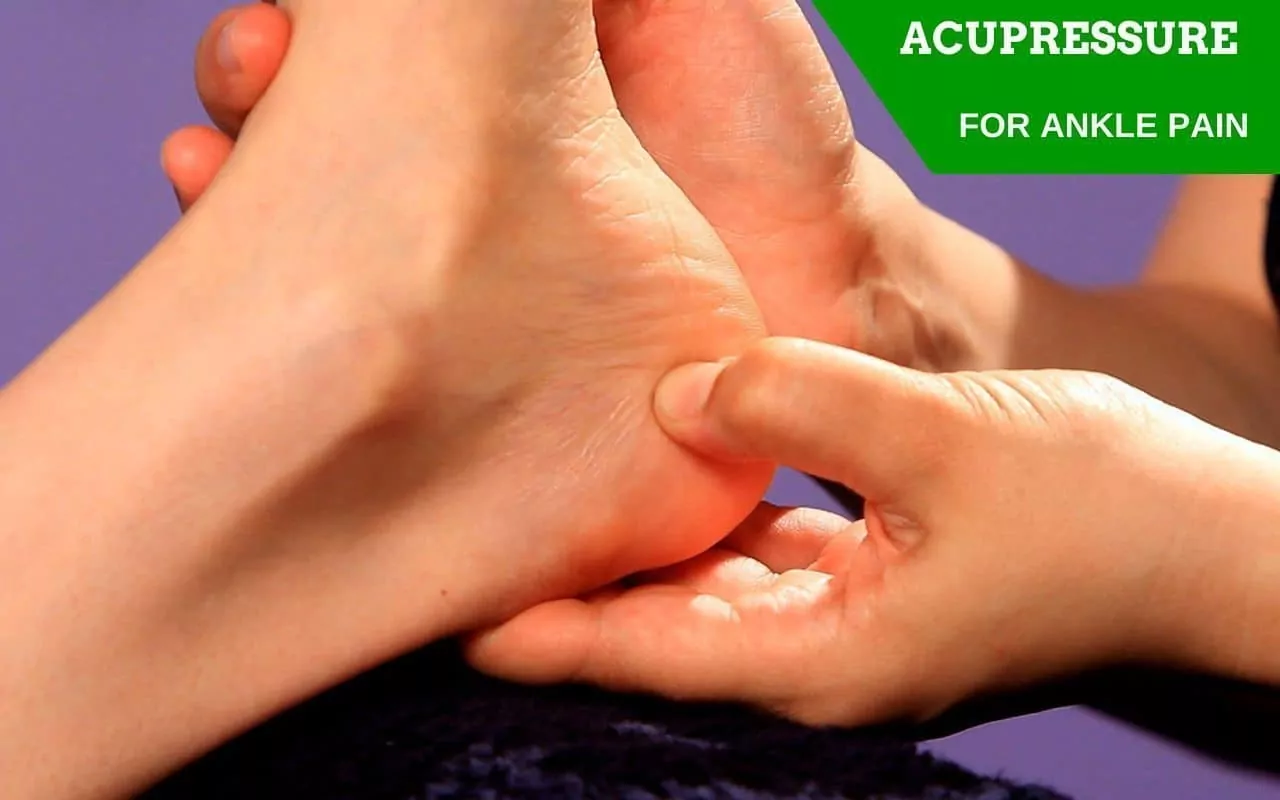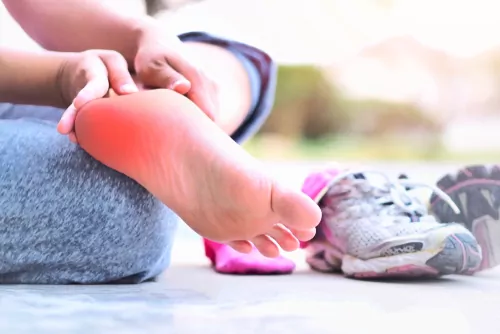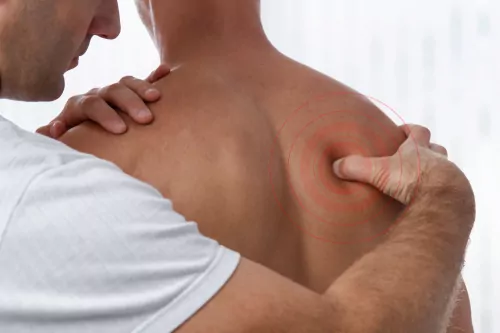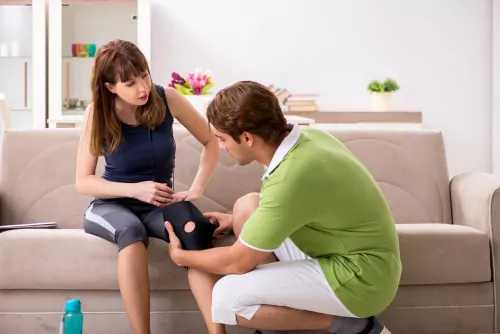
Acupressure, an ancient healing technique originating from Traditional Chinese Medicine, has been utilized for centuries to alleviate pain and discomfort in various parts of the body. Recently, this practice has gained attention for its potential to address ankle pain and muscle problems. By targeting specific pressure points for ankle pain and applying gentle yet firm pressure, individuals can experience relief from common issues like sprains, strains, and general discomfort.
Ankle pain and muscle problems can stem from various factors, including physical activity, injury, or underlying medical conditions. Acupressure offers a non-invasive and drug-free alternative for managing these issues. When applied correctly, this technique can help to reduce inflammation, improve circulation, and promote overall relaxation – ultimately contributing to the healing process.
In this article, readers will be introduced to the fundamentals of acupressure, including its history, principles, and techniques. The focus will primarily be on how acupressure can be applied to alleviate ankle pain and muscle problems, as well as offering insights on specific pressure points that are most effective for these concerns. This information aims to provide a comprehensive guide for those seeking a natural, holistic approach to healing their ankle-related afflictions.

Acupressure is a healing technique rooted in traditional Chinese medicine. It involves the application of manual pressure to specific points on the body, known as acupoints or pressure points. These points are situated along the body’s meridians, channels through which vital energy or qi flows.
Practitioners of acupressure believe that stimulating these points can help balance the flow of qi, which is essential for overall well-being. By maintaining the equilibrium of yin and yang energies, one can alleviate pain and treat various ailments.
In the context of ankle pain and muscle problems, acupressure can address issues that arise from overexertion, injury, or underlying conditions. By identifying and applying pressure to the relevant acupoints, practitioners may support the body’s natural healing processes in a non-invasive manner.
As a complementary therapy, acupressure can be used alongside conventional treatments for ankle pain and muscle issues. Whether the discomfort stems from a sprain, strain, or arthritis, working with a knowledgeable acupressure practitioner may offer additional relief and aid in recovery.
While acupressure is generally considered safe with few side effects, it is important to approach treatment with caution, particularly for individuals with specific medical conditions or those who are pregnant. It is wise for patients to consult a healthcare professional before beginning any new treatment, including acupressure.
Acupressure is a traditional healing method that has its roots in ancient Chinese medicine. It focuses on the concept of energy, also known as “chi” or “qi,” flowing through the body along distinct pathways called meridians.
When energy flow is disrupted due to various factors, it results in ailments, pain, or muscle problems. Acupressure seeks to restore the balance of this energy flow by applying pressure to specific points on the body, known as acupoints.
Through the application of pressure to these acupoints, acupressure stimulates the body’s self-healing capabilities. It is believed that by targeting these points, one can release blocked energy, thus addressing the underlying cause of pain or discomfort.
As pressure is applied, endorphins, the body’s natural pain-relieving hormones, are released. This leads to a sense of relief and relaxation for the individual undergoing the treatment.
Applying acupressure to specific points on the ankle can result in significant benefits for individuals with ankle pain or muscle problems. By stimulating these points, blood circulation is improved, leading to the reduction of inflammation and swelling in the affected area. In turn, individuals may experience a decrease in ankle joint stiffness and an increase in overall flexibility.
Furthermore, acupressure promotes a harmonious balance between the body and mind, helping to alleviate not only physical pain but also stress and anxiety associated with it. This holistic approach, combining physical and mental relief, lends to acupressure’s appeal as an effective and natural method for managing ankle pain and muscle problems.
The benefits of acupressure are best achieved when performed by a knowledgeable practitioner who can accurately identify the relevant acupoints and apply the appropriate amount of pressure. However, individuals interested in learning this technique can seek guidance from professionals or utilize self-help resources to try acupressure before consulting a specialist.

The ankle is a complex and essential structure that plays a vital role in our ability to walk, run, and perform daily activities. It connects the leg to the foot and is composed of bones, tendons, muscles, and ligaments that work together to provide stability, flexibility, and mobility.
The bones of the ankle include the tibia, fibula, and talus. The tibia, commonly known as the shinbone, is the larger and stronger of the two lower leg bones. It forms the inner part of the ankle joint, while the fibula, the thinner and more flexible bone, forms the outer part.
The tibia and fibula are connected by the interosseous membrane, a fibrous tissue that adds support and stability to the leg and ankle. The talus bone sits below these bones and forms a connection between the leg and foot, transferring weight and enabling motion.
The ankle joint is supported by a network of strong ligaments, including the deltoid, anterior talofibular, and calcaneofibular ligaments, which provide stability and contribute to the ankle’s range of motion. Ligaments are bands of connective tissue that attach bone to bone, acting as the primary stabilizers of the ankle joint.
Several muscles and tendons surround the ankle and contribute to its function. Tendons are tough, fibrous cords that connect muscles to bones. The Achilles tendon, which connects the calf muscles to the heel bone, is the largest and strongest tendon in the ankle.
Other than the Achilles tendon, tendons in the ankle region include the peroneal tendons on the outer part of the ankle and the posterior tibial tendon on the inner part. These tendons work in tandem with their associated muscles to facilitate the complex movements and stability needed for daily activities.
Ankle pain can be caused by a variety of factors such as injuries, overuse, or underlying medical conditions. Understanding the intricate anatomy of the ankle can help individuals and healthcare professionals better address and treat ankle pain, muscle problems, and other related issues.
There are various conditions that can lead to ankle pain and muscle problems. One common issue is arthritis, a disease affecting joint health. In the ankle, arthritis can manifest as ankle arthritis, causing stiffness, swelling, and pain in the joint.
Another frequent cause of ankle discomfort is an ankle sprain. This occurs when ligaments within the ankle joint are stretched or torn, often due to a sudden twist or impact. Sprained ankles can result in swelling, bruising, and limited range of motion. Proper care and treatment are essential to prevent long-term complications from ankle sprains.
In addition to sprains, the ankle can be affected by tendonitis. This is an inflammation of the tendons surrounding the joint, often resulting from overuse, excessive stress, or injury. Symptoms of tendonitis may include pain, swelling, and stiffness, impacting the ability to perform daily activities.
Osteoarthritis can also contribute to ankle pain and muscle issues. This degenerative joint disease is caused by the breakdown of cartilage within the joint, leading to bone-on-bone contact and inflammation. Osteoarthritis can cause stiffness, swelling, and pain, and may limit movement in the affected ankle.
The severity and treatment options for ankle and muscle problems will depend on the specific condition and individual personal factors. Maintaining overall health and addressing the underlying causes of these issues are crucial steps in managing ankle pain and preventing future complications.

Acupressure is an ancient healing technique that involves applying pressure to specific points on the body to ease pain and muscle tension. There are several acupressure points that can be targeted to address ankle pain and muscle issues in the feet.
Located at the midpoint of the Achilles tendon, between the ankle and the heel, this point is beneficial for relieving muscle tension in the ankle area. To apply pressure, use your fingers or palms and gently press on this point for a few minutes.
Found on the outer side of the ankle, just below the outer ankle bone, this point helps alleviate pain and stiffness in the ankle joint. Press with your fingers or palms, maintaining steady pressure for a few minutes.
Located on the inner side of the ankle, below the inner ankle bone, this point is known to alleviate pain and promote relaxation in the muscles of the feet. Apply finger pressure for several minutes, or use a specialized acupressure tool for added precision.
Positioned halfway between the inner ankle bone and the heel, this acupressure point helps with ankle pain, swelling, and stiffness. Using fingertips or the palm of the hand, apply firm but gentle pressure for several minutes.
To locate this point, measure approximately three finger widths above the inner ankle bone. It is used to reduce swelling and ease discomfort in the lower leg and ankle area. Apply steady pressure with the fingers or palm for optimal results.
Remember to apply pressure on each point for a few minutes on both feet, as targeting both sides helps maintain balance in the body. Before applying acupressure, ensure that you are in a comfortable position and your hands are clean. Regular practice of acupressure on these points may provide relief for those experiencing ankle pain and muscle problems. However, if symptoms persist or worsen, it is essential to consult a healthcare professional.
Acupressure is a natural method to manage pain and improve the overall function of the musculoskeletal system. By targeting specific points on the body, acupressure can help provide relief from various types of pain, such as back pain, lower back pain, foot pain, and headaches. The technique is primarily based on the concept of life energy, also known as “qi,” flowing through meridians or pathways in the body.
Applying pressure on these points can help stimulate the flow of qi and alleviate discomfort. People often use acupressure to address issues like plantar fasciitis, heel pain, and general soreness in cases of foot pain. The therapy is effective because it stimulates the body’s self-healing mechanisms, promoting a healthy balance within the musculoskeletal system.
In cases of lower back pain and sciatic pain, acupressure can provide significant relief by targeting areas responsible for muscle tension and inflammation. This targeted approach helps to reduce the pressure on nerves, leading to decreased pain and discomfort. Additionally, acupressure has the potential to ease headaches caused by muscle tension in the neck, shoulders, and head.
Besides addressing specific pain areas, acupressure offers numerous benefits for general pain management.
Although individual results may vary, acupressure has proven to be a valuable pain management tool for many people. Incorporating this natural therapy into a comprehensive treatment plan alongside conventional methods can often help manage pain more effectively. This leading to better overall wellbeing and enhanced quality of life.

Acupressure is a traditional healing practice that employs pressure on specific points of the body. These pressure points are believed to correspond with specific energy channels, also known as meridians. By applying gentle pressure to these points, it can help alleviate pain, promote relaxation, and support the body’s natural healing processes.
When addressing ankle pain and muscle problems, the first step is to identify the appropriate pressure points. For instance, pressure points like the SP3, GB40, as well as the KI3 points can be beneficial for ankle pain relief. A knowledgeable practitioner will be familiar with these points and use suitable techniques to stimulate them.
To perform an acupressure session, the practitioner usually asks the client to lie down on a massage table, or any flat surface. Where they can easily access the desired pressure points. It is crucial to ensure that the client is comfortable and in a relaxed state when beginning the session.
During the acupressure session, the practitioner will employ their fingers, thumbs, or other tools to apply steady, firm pressure on the identified points. The pressure is sustained for a duration of about 10-30 seconds, depending on the client’s needs and pain level. It is important to note that although acupressure may cause momentary discomfort, it should never be intensely painful.
Throughout the procedure, the practitioner will work in a methodical manner, concentrating on one pressure point at a time. They may also use additional techniques such as circling or rubbing motions depending on the individual’s muscle conditions.
As the pressure points are stimulated, the muscles and tissues around the ankle may experience relief and improved circulation. This, in turn, contributes to the overall relaxation and healing process.
Acupressure is an alternative healing technique that can potentially offer several health benefits. Applying pressure to specific points on the body is believed to help improve circulation, release endorphins, and reduce stress. Moreover, people have been using acupressure for centuries to treat various ailments, particularly addressing ankle pain and muscle problems.
One of the major benefits of acupressure is the relief it can provide to individuals experiencing muscle tension and pain. Since acupressure works on the principle of stimulating energy flow throughout the body. It can help to improve circulation, which in turn can alleviate pain in the affected area such as the ankle.
The release of endorphins during an acupressure session is another advantage. These natural pain-relieving chemicals help in reducing stress levels, promoting relaxation, and providing a sense of calm. This may be beneficial for people suffering from anxiety, insomnia, or other stress-related conditions.
Additionally, acupressure has shown promise in providing relief from nausea and vomiting. Pregnant women and cancer patients undergoing chemotherapy are among those who may find relief from these symptoms through acupressure therapy. By targeting specific points on the body, acupressure practitioners aim to alleviate these symptoms without resorting to medication.
However, as with any therapy, there are potential side effects associated with acupressure. In some cases, individuals may experience bruising, aching, or temporary discomfort at the pressure points. While this is generally rare, it is important to communicate with the practitioner if any discomfort arises during the session.
Some individuals may not be suitable candidates for acupressure, particularly those with severe health conditions or who are pregnant. It is essential to consult with a healthcare professional before embarking on any form of alternative therapy, including acupressure.

Acupressure, an ancient healing technique, is known to provide relief for various health conditions. It involves applying gentle pressure to specific points on the body to stimulate the body’s self-healing abilities.
For individuals experiencing depression and anxiety, acupressure has shown promising results. By activating the release of endorphins and promoting relaxation, acupressure may help reduce the symptoms of these mental health concerns. However, it is used as a complementary therapy and not as a replacement for professional medical treatment.
When it comes to insomnia, acupressure has proven to be an effective natural remedy. It helps to regulate the body’s sleep-wake cycle by targeting specific pressure points that promote sleep induction and relaxation.
Regarding digestive issues such as constipation, diarrhea, and abdominal pain, acupressure can be a valuable adjunct therapy. By focusing on specific meridians that correspond to the gastrointestinal system, acupressure may help to alleviate discomfort and regulate bowel movements.
For women facing irregular menstruation, acupressure is shown to assist in regulating the menstrual cycle and alleviating pain associated with it. Moreover, it can be beneficial during pregnancy as it helps alleviate morning sickness, reduce labor pain, and even promote postpartum recovery. However, pregnant women should consult with their healthcare provider before using acupressure to ensure safety for both themselves and the baby.
Lastly, while acupressure is not a cure for cancer, it can be a valuable complementary therapy for individuals undergoing cancer treatment. Acupressure may help alleviate side effects of chemotherapy or radiation, such as nausea, pain, or fatigue, and may improve the overall quality of life for cancer patients.
For more information on our Copper Infused Compression Ankle Sleeve, Click Here!
There are several acupressure points specifically targeted at alleviating ankle pain. Some of the most effective points include:
Applying gentle, yet firm pressure on these points for about 30 seconds can help facilitate pain relief.
Acupressure can improve blood circulation in the ankle area, encouraging muscle relaxation and reducing inflammation around the joint. The stimulation of specific points also activates the body’s natural healing capabilities, releasing endorphins to alleviate pain and discomfort.
To address heel pain, focus on the following points:
Performing circular motions while applying pressure to these points can provide relief from heel discomfort.
Leg pain can radiate to the ankle, leading to discomfort in both areas. Key acupressure points for leg pain include:
Consistent and focused application of pressure on these points can help alleviate leg and ankle pain.
Yes, reflexology can complement acupressure in addressing ankle pain and muscle issues. Focusing on foot reflex points corresponding to the ankle and the muscles surrounding it can enhance the overall effectiveness of the treatment.
Acupressure for foot pain indirectly benefits the ankle by improving circulation, reducing inflammation, and promoting relaxation. Enhancing ankle flexibility and promoting overall well-being is possible by alleviating foot pain because ankle joints and foot muscles closely connect.